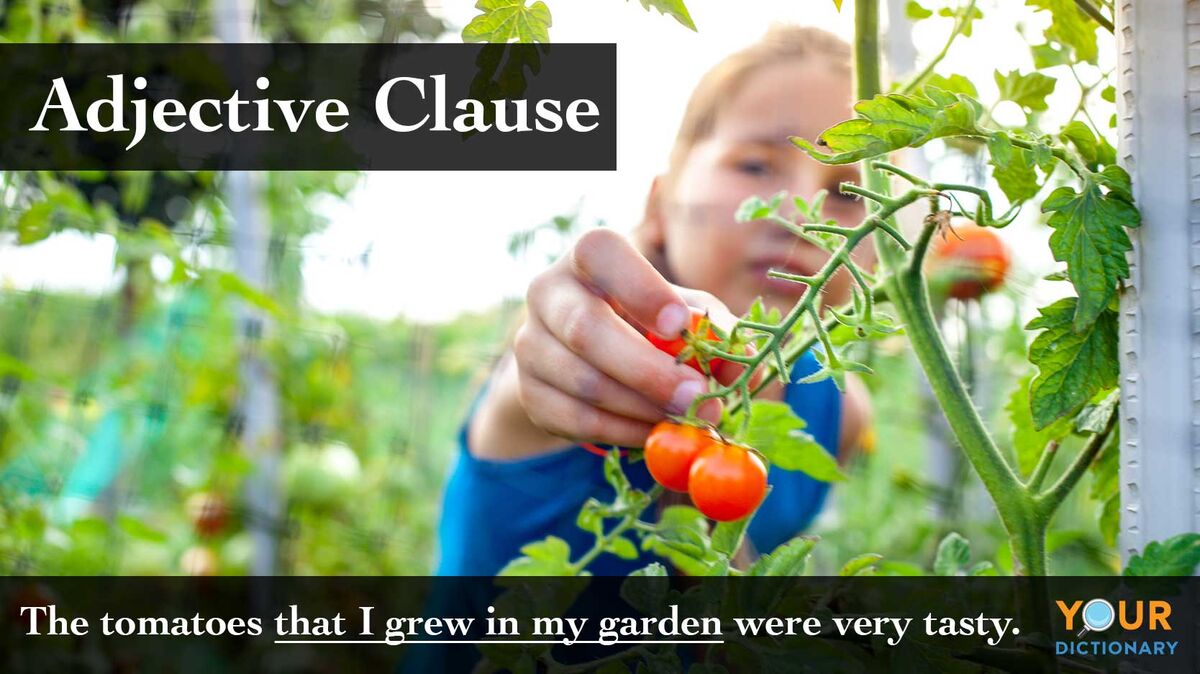
The key to mastering the usage of adjective and adverb clauses lies with learning how to tell them apart. While they are both dependent clauses, they perform two distinct functions in sentences. There are several important differences that can help you distinguish between these two types of clauses and properly use each of them.
Characteristics of Adjective Clauses
Adjective clauses modify nouns or pronouns and answer questions such as "which?" or "what type of?" The purpose of an adjective clause is to clarify or add detail about a noun, noun phrase or pronoun.
Relative Pronouns Begin Adjective Clauses
Only phrases that begin with certain relative pronouns can be adjective clauses. Adjective phrases always begin with one of the following words:
- that
- when
- where
- which
- who
- whom
- whose
Examples of Adjective Clauses in Sentences
Reviewing examples of adjective clauses in sentences is a good way to learn to identify them. The phrases in bold below are adjective clauses. Note that each one addresses “which” or “what type” and starts with one of the words listed above.
- The tomatoes that I grew in my garden were very tasty.
- I remember a time before digital downloads when movies were on VHS tapes.
- We’re looking for a vacation resort where there are activities for everyone.
- The guitar, which Elvis used to own, was found at a garage sale.
- Jeremy, who won the lottery, now lives in Malibu.
- Bobby’s teacher is the person whom we spoke to at orientation.
- These are the people whose beach house we rented.
See examples of adjective clauses for even more sample sentences.
Immovable Clauses
Adjective clauses typically can't be moved within a sentence without causing a grammatical error. For example, look at what happens when a few of the example sentences above are rearranged.
- That I grew in my garden the tomatoes were tasty.
- Which is the one Elvis used to own the guitar was found at a garage sale.
Neither of the two lines above makes grammatical sense when the adjective clause is moved.
Identifying Adverb Clauses
Adverb clauses modify verbs or verb phrases. They answer questions about verbs or verb phrases that relate to time, location, purpose, and condition. These clauses address questions of "why?," "when?," "where?," "to what degree?," or "under what conditions?"

Subordinating Conjunctions Begin Adverb Clauses
Adverb clauses always begin with subordinating conjunctions. There are quite a few subordinating conjunctions. They are all words or phrases that signify time, cause and effect, opposition, or condition.
|
after |
although |
as |
|
because |
before |
even if |
|
even though |
if |
in order that |
|
once |
provided that |
rather than |
|
since |
so that |
than |
|
that |
though |
unless |
|
until |
when |
whenever |
|
where |
whereas |
wherever |
|
whether |
while |
why |
Examples of Adverb Clauses in Sentences
Notice that each adverb clause below (marked in bold) begins with a subordinating conjunction and provides information related to the why, when, where, degree, or conditions of another part of the sentence.
- I wasn’t allowed to take my seat because I arrived after the concert started.
- The hostess wouldn't seat us because the restaurant was closed.
- Even though I arrived very early, the store was out of bananas.
- The seeds will take root wherever there is enough light.
- Sean will come to your party if you promise to let his band play.
- Until I get paid, I can’t buy new tennis shoes.
- She can come to the party provided that she doesn’t bring Mark with her.
See examples of adverb clauses for even more samples.
Adverbial Clauses are Movable
Learning how to use adverb clauses can help you understand them better. Unlike adjective clauses, adverb clauses are movable within a sentence. Note how the meaning does not change when some of the above examples are restructured.
- Because the restaurant was closed, the hostess wouldn't seat us.
- Wherever there is enough light, the seeds will take root.
- If you promise to let his band play, Sean will come to your party.
Here, the order of clauses can be reversed without creating grammatical errors. When an adverbial clause precedes the sentence's independent clause, it is always separated with a comma.
Teaching Adverbial and Adjectival Clauses to Students
When teaching adjective and adverb clauses to students, it’s really important to emphasize the ways these two types of clauses differ from each other, as well as how they are similar.
Similarities of Adjective and Adverb Clauses
Adjective and adverb clauses share several similarities. Don’t let these similarities confuse you when it comes to identifying which type of clause is present in a sentence.
- Adjective and adverb clauses cannot stand on their own as sentences because they are not independent clauses.
- Because they are both clauses, both types do have a subject and a verb.
- They can both be essential or nonessential parts of sentences.
- They both modify and clarify other words in the sentence.
- They both provide clarifying information, but not the same kind of information.
- Both types of clauses start with a specific type of word, but not the same type.
Differences Between Adjective and Adverb Clauses
Knowing the ways adjective and adverb clauses differ from one another is the key to identifying them correctly.
- Adjective clauses begin with a relative pronoun, while adverb clauses start with a subordinating conjunction.
- Adverb clauses can move to different positions within a sentence without causing a problem, but this is not true for adjective clauses.
- Adjective clauses address “which” and “what type.” Adverb clauses address “why,” “when,” “where,” “to what degree,” and “under what conditions.
Adjective Clause vs. Adverb Clause Quiz
Expand Your Adjectival and Adverb Expertise
Now that you’re clear on the difference between adjective clauses and adverb clauses, expand your knowledge by reviewing these lessons on adjectives and adverbs. Once you have completed them, explore this extensive list of descriptive words. It includes adjectives and adverbs as well as gerunds.